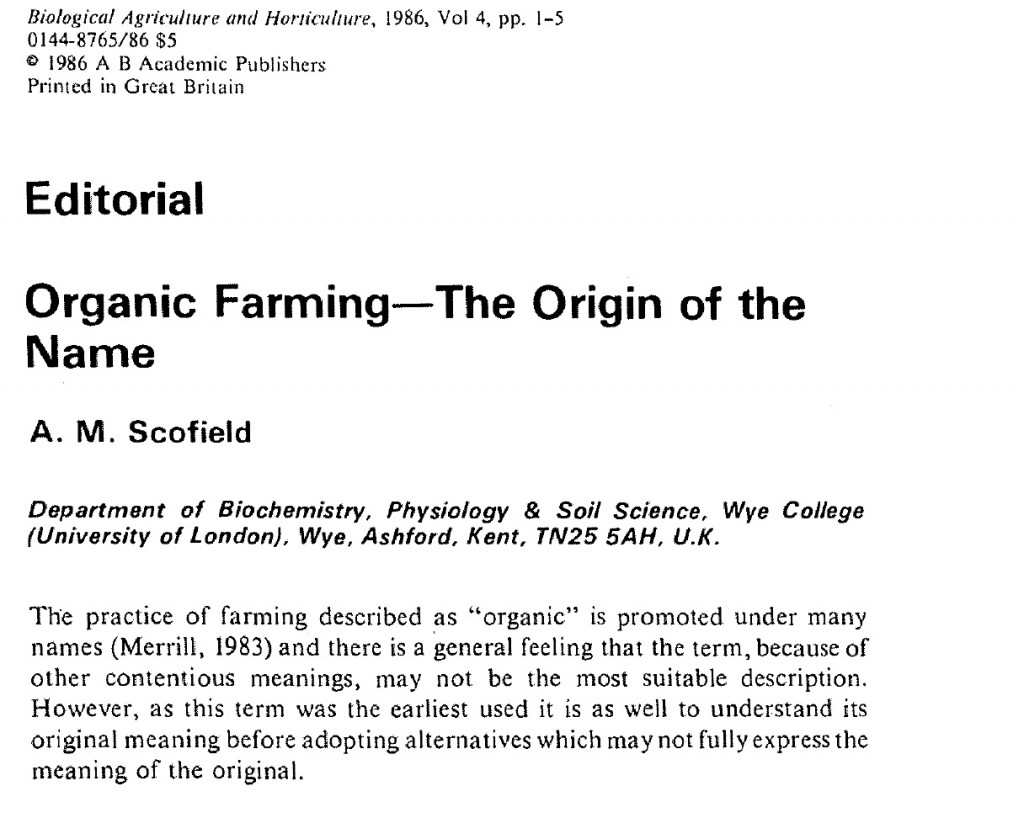 The practice of farming described as “organic” is promoted under many names (Merrill, 1983) and there is a general feeling that the term, because of other contentious meanings, may not be the most suitable description. However, as this term was the earliest used it is as well to understand its original meaning before adopting alternatives which may not fully express the meaning of the original.
The practice of farming described as “organic” is promoted under many names (Merrill, 1983) and there is a general feeling that the term, because of other contentious meanings, may not be the most suitable description. However, as this term was the earliest used it is as well to understand its original meaning before adopting alternatives which may not fully express the meaning of the original.
The present organic movement grew from the influential publications of workers such “as Howard (1940), Balfour (1943) and Rodale (1945) which resulted from concern in the inter-war years over problems such as soil”erosion and health. The true roots of modern organic farming, however, lie earlier in the agriculture of the anthroposophic followers of Rudolf Steiner (1924). This movement, known as biodynamic agriculture, was developed from a series of eight lectures given by Steiner at the request of a group of German farmers concerned about the increasing degeneration they had noticed in seed-strains and in many cultivated plants: The origin of the term “organic farming” also lay here for Lord Northbourne, who first used the term “organic” in his forgotton classic “Look to the Land” (1940) (Harwood, 1983), was a practitioner of biodynamic farming. although it is not obvious from his book, and this provided him with the inspiration of his vision of the farm as a sustainable, ecologically stable, self-contained unit, biologically complete and balanoed-a dynamic living organic whole.
(Biological Agriculture and Horticulture. 1986, Vol 4, pp. 1-5)